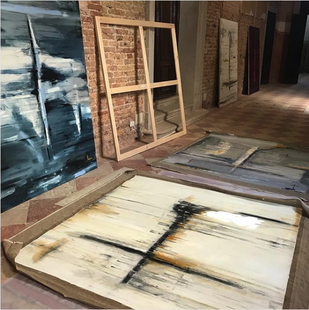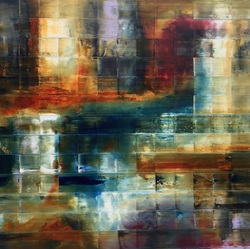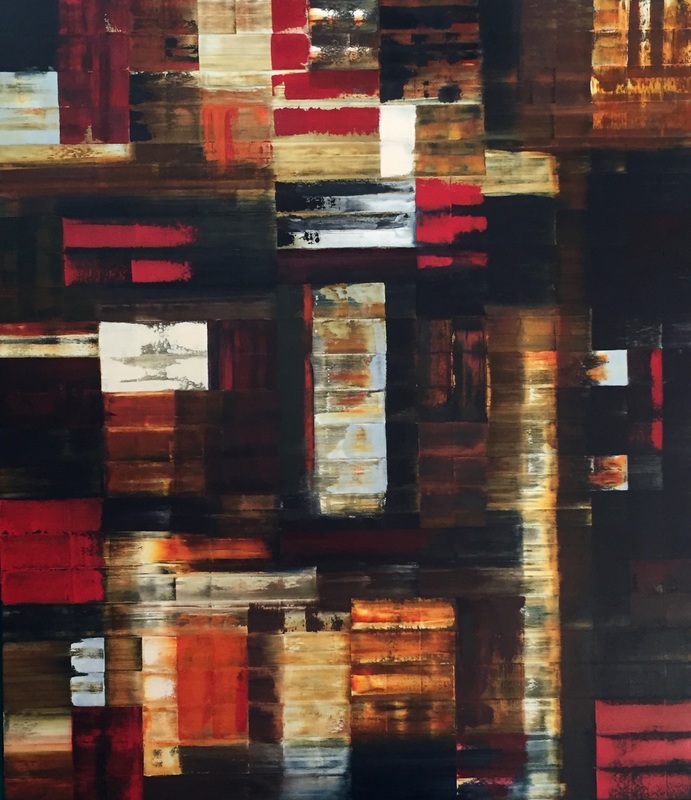 The Venice Biennale is often referred to as the "Olympics" of the art world and there are many reasons this is true! It is very expensive to exhibit at and NOT one penny is paid for by the Biennale. Everything must come from the artist, the supporting foundation, and the artists benefactors. Luckily I have a great group of collectors who really stepped up to the bat to help me raise the initial costs. I was approached in early 2018 about possibly doing an exhibition during the Biennale. My first goal was a foundation and a curator to write the curatorial statement in a way that the Biennale committee would notice. I asked an old friend who is an important curator and academic in NY to write the statement for the Biennale. With a deadline approaching we went about putting ideas and thoughts on paper. What was relevant in the way I paint to the theme of the 58th Biennale, "May You Live in Interesting Times"? We landed on the idea of Modern Apostles which eventually became "Influencers and Thought-provokers". These are people that have great influence in our world and can start a war, destroy a company, or create a best selling author with a tweet! My curator had some issues that took president so I had to start looking once again to pick up where she had left off. I was introduced to Priscialla Fraser who is the director of the MAK Center for Art & Architecture. We clicked immediately and she agreed to write the statement and to process all the paperwork to get us accepted. This was August of 2018. The application for the Biennale requires a curatorial statement, essays on me as the artist, the supporting foundation, the curator and tons of paperwork. It has to be approved by the director, Ralph Rugoff and is then sent before both the selection committee and the board. Its a lengthy process and we did not get the approval letter until December 26!! We were now officially one of the 21 collateral exhibitions approved by the Biennale as part of the overall program. The Pollock Krasner Foundation agreed to support the exhibition and became my biggest financial contributor! Part of their support was also awarding me the Prize for Creativity, a special award given in honor of Lee Krasner. I am only the 3rd artist to have received this. What a huge honor! BTW, the Pollock is the most amazing group of people you can ever hope to work with! More to come about logistics, press, costs, etc... So much to tell! Los Angeles based artist Todd Williamson will open his solo exhibition "Processional" at the 58th International Venice Biennale on May 11, 2019. The Pollock Krasner Foundation, in partnership with the MAK Center for Art & Architecture and curated by Executive Director Priscilla Fraser, presents PROCESSIONAL @ the Chiesa di Santa Maria della Pieta on the Grand Canal near the Danielli Palace Hotel. Williamson collaborated with Professor Greg Walter from the UNC School of the Arts on a 3 movement work of original music specifically written for the Processional exhibtion. Williamson was also awarded the "Prize for Creativity" by the Pollock Krasner Foundation making him the 3rd artist to receive this particular award. For Processional, Todd Williamson examines the ideas of order and tradition to insinuate the deep uncertainty and uncontrollable political, social, and cultural movements of our time. Both the work and concept generated for this installation will draw directly from the environment in which it will be displayed, Chiesa di Santa Maria Della Pieta, in Venice. Occupying the long, narrow chapel located to the side of the Church, the space invites a meditative, sequential process of reflection. Drawing from the formal proportions, material richness, and dramatic natural light of this special site, the artist has developed a series of works, which encourage contemplation, challenge the perceived order of tradition and ask who are our apostles today? What are their roles? Is the influence of today’s perceived Influencers truly inspirational or dangerously dogmatic? William’s large scale canvases will sweep across the chapel’s walls of brick and crumbling plaster. The artworks will offer a new layer, a current materiality, to the deep patina of aging plaster and brick establishing a deeply rich, and continuous monochromatic palette. The colors of these new works are connected to what Williamson has termed, “the Modern Apostles and their antithesis”, that is, contemporary influencers and thought-leaders that have the remarkable power to cover, pervade, and completely overwhelm the existing environment. These rare individuals can then both initiate great ethical reform or fragment such ethics to the point of irreparable damage and erasure. While figures have interrupted the establishment through civil, social and technological innovations (Nelson Mandela, Steve Jobs, Elon Musk); others have operated in a totally opposite direction, bringing fractures, distortions, erosion of pre-existing structures, but without any innovative or constructive intent of a new order. "PROCESSIONAL" will travel from the Venice Biennale to the MAC Museum in Singen Germany afterwards. #pollockkrasnerfoundation #makcenter #gregwalter #UNCSA #losangelesartist #venicebiennale #BiennalediVenezia #VeniceBiennale2019 The POLLOCK KRASNER Foundation has awarded Todd Williamson the “Prize for Creativity” 2019 for work that “embodies high creative standards and exemplifies the impact of art on individuals and society.”
The Foundation will also support Williamson’s project “Processional” in the Venice Biennale for 2019 #toddwilliamson #venicebiennale2019 #pollockkrasnerfoundation#makcenterforartandarchitecture #artecommunications #Processional #makcenter #contemporaryart #wehoarts "PROCESSIONAL" presented by the MAK Center of Art & Architecture |
AuthorTodd Williamson artist. Categories |


 RSS Feed
RSS Feed
